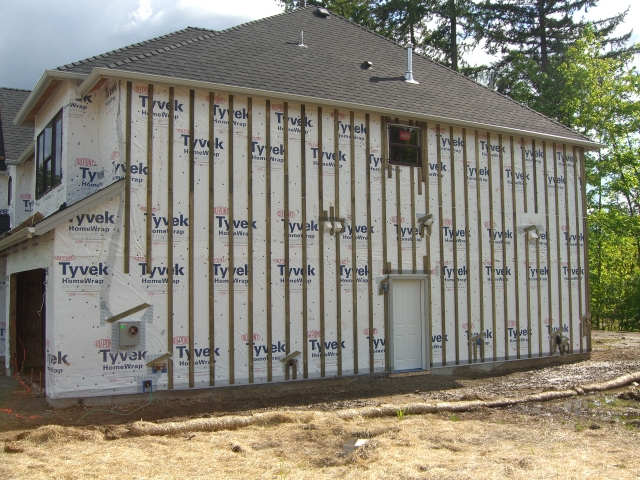Living in the Pacific Northwest can’t be beat. The region’s natural beauty of old-growth forests, majestic mountains, dramatic coastline, rivers, and freshwater lakes is an outdoor wonderland we are all privileged to call our own backyard.
We joke that all this breathtaking scenery comes at a price, one that we pay with seemingly endless waterlogged days throughout fall and winter. It rains in our neck of the woods. A lot. The greater Portland area sees on average 36 inches of rain annually, with most of it falling between November and February.
That’s why, when it comes to building new homes, the importance of water management in our wet climate is so important to maintaining structural integrity and longevity. Exterior water leaks are a consistent source of frustration and headaches for Oregon homeowners. They’re also the number one problem for builders in the Pacific Northwest, accounting for costly callbacks and repairs.
Mitigating moisture
Excessive moisture in a home’s sheathing can cause dry rot without adequate ventilation. Dry rot is typically not covered by most insurer’s, which means homeowners must foot the expensive repair bill if the damage isn’t caused by faulty construction.
Water will inevitably travel behind a home’s siding, so an exterior wall system must include a way for the water to not only drain but to also provide proper ventilation. It’s about creating a system that gives the water a place to go and moisture enough space and airflow to dry.
Most new homes built in Oregon are constructed using a housewrap with a crinkle-type texture to drain water that travels behind the exterior siding, but they do not provide the necessary airflow to dry out retaining moisture. Trapped moisture can lead to a whole host of problems, from mold growth and dry rot to peeling and insect infestation.
Rain screen siding improves a home’s envelope
In 2003, Renaissance Homes President and Founder Randy Sebastian understood that traditional methods were no longer adequate and knew building science could offer a better way to protect the homes he builds here in Oregon. He and his team developed a rain screen siding assembly that was truly ahead of its time. Oregon Residential Specialty Code included a drainage gap requirement in 2008 and a rain screen requirement or other effective drainage method in early 2010.
“Rain-screen siding is the single best thing a builder can do to protect a home from leaks,” said Sebastian.
Rain screen siding requires a gap between the exterior siding planks and the home’s weather-resistive barrier to provide adequate water drainage and air circulation. It also helps equalize the pressure from the force of windblown rain, offering even more leak protection. Renaissance Homes exceeds Oregon residential building code in many ways. Code calls for ⅛” of space between the cladding and sheathing; Renaissance’s wall assembly creates a ½” space for even more ventilation. Screening material installed at the wall’s top and bottom prevents debris from getting inside the air space, and all windows and egresses from electrical and piping are super flashed to move water away from the exterior.

Leak free since 2003
Every Renaissance home has been built using rain screen siding since 2003. We are proud to share that all homes since that time have been exterior leak free. We enjoy providing our homeowners with the peace of mind in knowing their homes are airtight, effectively mitigate water and moisture, and energy efficient.
“We are the only builder that uses this type of rain screen siding in all of our homes,” said Sebastian.
If you’re interested in learning more about the benefits of rain screen siding and the Renaissance Difference in the construction and home purchase experience, please contact our Sales Team.



